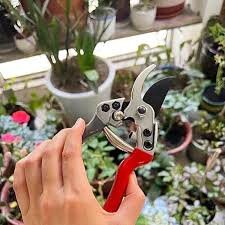Learn how to plant, grow, and care for the stunning Calathea Roseopicta indoors with this comprehensive guide. Get tips on soil, light, watering, humidity, and more to ensure your plant thrives.
If you’re a fan of gorgeous foliage, the Calathea Roseopicta is a must-have for your indoor plant collection. Also known as the Rose-Painted Calathea or Rose Prayer Plant, this tropical beauty boasts stunning, patterned leaves that are sure to catch the eye of every visitor.
Native to the rainforests of Brazil, the Calathea Roseopicta requires specific care to thrive indoors. In this guide, we’ll cover everything you need to know to grow and maintain this stunning plant.
Planting Your Calathea Roseopicta

When it comes to planting your Calathea Roseopicta, the right soil mix is crucial. These plants prefer a well-draining, nutrient-rich potting mix specifically formulated for tropical plants. You can create your own by combining equal parts of peat moss, perlite, and potting soil.
Choose a pot with drainage holes to prevent waterlogged soil, which can lead to root rot. A plastic or terra cotta pot with a width slightly larger than the plant’s root ball works well.
Light Requirements

Calathea Roseopicta plants thrive in bright, indirect light. Direct sunlight can scorch their delicate leaves, so it’s best to place them near an east or north-facing window. If you don’t have access to natural light, you can supplement with grow lights.
Watering Needs

Proper watering is essential for the health of your Calathea Roseopicta. These plants prefer consistently moist soil, but be careful not to overwater. Check the soil moisture level by sticking your finger into the potting mix – if the top inch is dry, it’s time to water.
When watering, use lukewarm or room temperature water, as cold water can shock the plant. Water thoroughly until the excess moisture drains out of the bottom of the pot.
Humidity Requirements
As a tropical plant, the Calathea Roseopicta thrives in high humidity conditions. Aim for a humidity level of at least 50%, but ideally between 60-70%. If your home’s air is too dry, you can increase humidity levels by:
- Placing the plant on a pebble tray filled with water
- Using a humidifier near the plant
- Grouping plants together to create a humid microclimate
- Misting the leaves regularly (but avoid getting water on the soil)
Temperature Requirements

Calathea Roseopicta plants prefer warm temperatures between 65°F and 85°F (18°C to 29°C). Avoid placing them near drafty windows, air conditioning units, or heating vents, as sudden temperature changes can stress the plant.
Fertilizing Your Calathea Roseopicta

During the growing season (spring and summer), feed your Calathea Roseopicta every four to six weeks with a balanced, water-soluble fertilizer diluted to half strength. In the winter months, you can reduce fertilizing or skip it altogether.
Pruning and Grooming

Occasional pruning can help keep your Calathea Roseopicta looking its best. Remove any dead, damaged, or discolored leaves by cutting them off at the base of the stem with clean scissors or pruners.
Regularly wipe the leaves with a damp cloth to remove dust and keep them looking vibrant. Avoid getting water on the leaves, as this can promote fungal growth.
Common Issues and Troubleshooting

Even with proper care, Calathea Roseopicta plants can sometimes encounter issues. Here are some common problems and their solutions:
Brown or Crispy Leaf Tips: This is often caused by low humidity levels or excessive fertilizer. Increase humidity and flush the soil with water to remove excess fertilizer salts.
Curling or Drooping Leaves: This can indicate underwatering or low humidity. Water the plant thoroughly and increase humidity levels.
Yellow Leaves: Yellowing leaves can be a sign of overwatering, nutrient deficiency, or old age. Adjust your watering schedule and consider repotting or fertilizing.
Pests: Calatheas can be susceptible to pests like spider mites, mealybugs, and scale insects. Isolate the affected plant and treat with an insecticidal soap or neem oil solution.
With proper care and attention, your Calathea Roseopicta will reward you with its stunning foliage and add a touch of tropical elegance to your indoor space. Remember to be patient, as these plants can be finicky at first, but with the right conditions, they’ll thrive for years to come.
Pingback: Maidenhair Fern Care: A Comprehensive Guide for Lush and Healthy Growth -
Pingback: How to Plant, Grow, and Care for Rattlesnake Plant: A Comprehensive Guide -
Pingback: A Comprehensive Guide to Calathea varieties Gardeners School
Pingback: Calathea Roseopicta: How to Plant, Grow and Care
Pingback: Complete Guide to Growing Dragon Fruit Plants at Home -
Pingback: Calathea Roseopicta Plant Care Guide: How to Gr...
Pingback: How to Grow and Care for Peace Lily Plants : A Complete Guide
Pingback: Geogenanthus Ciliatus : The Jewel of the Rainforest